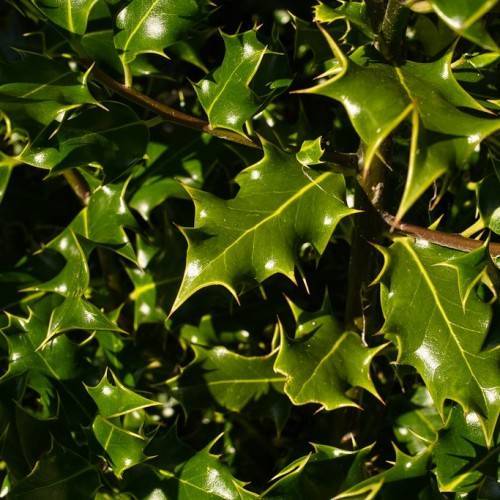
holly
Ilex meserveae 'Heckenstar' CASTLE WALL
Cycle:
Perennial
Watering:
Average
Hardiness Zone:
5 - 7
Flowers:
Flowers
Sun:
Full sun,part shade
Leaf:
Yes
Growth Rate:
Low
Maintenance:
Low
Drought Tolerant:
Yes
Salt Tolerant:
Yes
Thorny:
Yes
Care Level:
Medium
watering
Holly (Ilex meserveae 'Heckenstar' CASTLE WALL) should be watered often enough to keep the soil moist, but not soggy. Water your holly regularly during the growing season, aiming for 1-2 inches of water per week. This can be done by using either a watering can or a soaker hose. During the winter months, you can reduce the amount of water to once every 2 weeks or so. If the weather is particularly dry, consider increasing the frequency to once a week. However, check the soil to ensure it does not become overly wet.
sunlight
Holly (Ilex meserveae 'Heckenstar' CASTLE WALL) grows best in full sunlight for 6-8 hours a day. To ensure optimal growth, it’s important to position the plant in a spot that gets plenty of direct, unobstructed sunlight per day. Placing the holly in an area that receives morning sunlight and afternoon shade is ideal, particularly during the summer when the sun is most direct and intense. The plant should be placed near a southern or western-facing window, if possible, to ensure it receives the sunlight it needs. Avoid placing the plant in a shaded area, such as beneath the canopy of an tree or between buildings, as it may be deprived of adequate sunlight.
pruning
The pruning requirements for Ilex meserveae 'Heckenstar' CASTLE WALL will depend on the size of the shrub. Generally, most specimens of this plant species should be pruned in late winter or early spring to ensure healthy growth and avoid frost damage in colder climates. Light pruning should involve removing any broken, dead, or diseased branches. If required, hedges can also be lightly sheared in the spring or summer. Heavily pruning this species is not recommended unless it is absolutely necessary to restore shape or size. If pruning is extremely necessary, it is best to do so in late winter or early spring before new growth begins. This will help to avoid sap bleed and frost damage to new wood.
